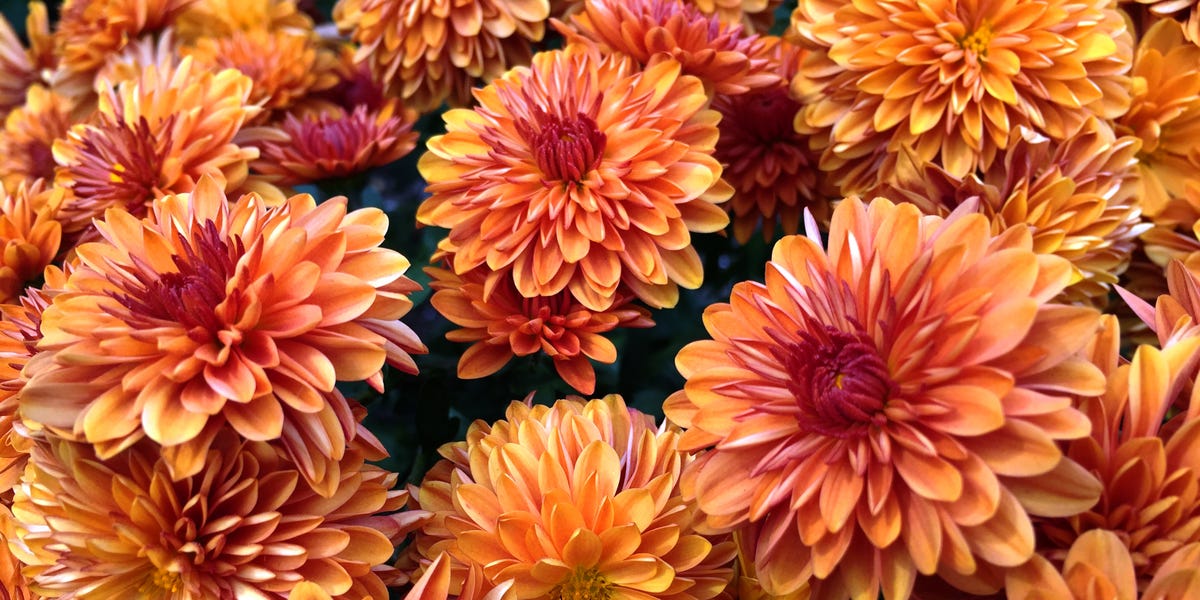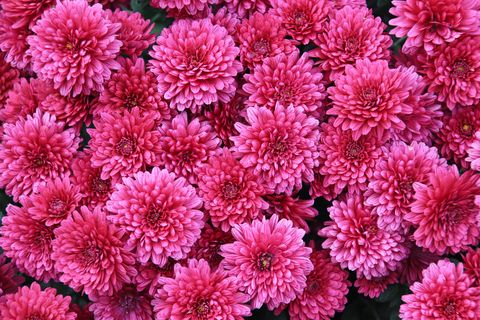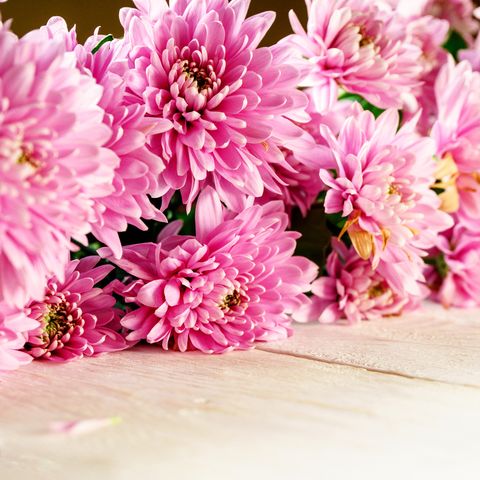
[ad_1]
It’s never too early to plan ahead when it comes to your garden. And as fall approaches, you may find yourself wondering what blooms will enhance your collection. While there are an array of eye-catching florals for the autumn season, including balloon flowers, dahlias, sunflowers and cosmos, you can’t overlook the beauty that comes with chrysanthemums. These fall-blooming beauties come in multiple colors — from red, white and orange to yellow, pink and burgundy — so you’re sure to find a shade that matches your personal style. Whether you’re interested in a casual environment or more extravagent look, we’re sharing how to grow mums (and how to care for them).
And if you’re looking for more green thumb tips, check out our guides on how to grow basil, aloe vera, spider plants, pumpkin plants and other healthy succulents.
This content is imported from poll. You may be able to find the same content in another format, or you may be able to find more information, at their web site.
Chrysanthemums 101:
In late summer when other plants call it quits, mums hit their stride. Like poinsettias, they’re photoperiodic, meaning they rely on specific amounts of light to send the signal that it’s time to start putting on a show.
On average, garden mums will not start to set buds until the nights last about 10 hours long. Blooms follow in six to 10 weeks. Cool temperatures don’t bother mums, either. In fact, chilly weather intensifies colors and keeps blossoms looking fresh until a hard, killing frost drops the curtain on the gardening year. If you choose early-, mid-, and late-blooming varieties, you will enjoy a full seven weeks of bloom — a brilliant last act for any landscape.
When selecting varieties, there’s wide range of types to pick from: decorative, daisy and low-growing cushion mums, as well as early-blooming anemones, quills and spiders. The new European-style Prophets Series — from Greenhouse Grower, an Ohio-based wholesale breeder and nursery — boasts more than 100 blossoms per plant. These sturdy-stemmed, ball-shaped beauties were inspired by varieties beloved in Belgium, where All Saints’ Day is celebrated each November first with lavish mum displays.
When to plant mums:
Though technically perennials, mums are often grown as annuals. If you live where winter can be frigid (USDA Plant Hardiness Zones 3 through 6), go with early-blooming varieties — they’re more likely to come back in subsequent years. Those of you who live south of Zone 6 can push the envelope, opting for varieties that need more time to reach their full potential. When winter looms, apply a mulch of crisscrossed evergreen boughs to help plants make it through the cold weather ahead.
Several years ago, horticulturists at the University of Minnesota developed a new chrysanthemum hybrid described by perennial breeder Neil Anderson, Ph.D., as a “hardy shrub mum.” Dubbed the My Favorite Series, the robust plants were touted as reliably perennial as far north as zone 3b. They have been hard to find the past couple of years but returned to the market this year under a new name, the Mammoth Series.
True to their new designation, these oversize mums can measure 2 to 3 feet tall and 4 to 5 feet across by their third season, with a massive canopy of flowers — up to 5,000 per plant. Monarch butterflies adore these shrubby wonders.
Finally, to further increase the odds that your chrysanthemums will survive winter, consider planting them in spring as opposed to late summer, to give root systems ample time to become established.
How to grow and care for mums:
- Soil: While mums thrive in just about any soil type, they do benefit from generous helpings of homemade compost. Dig in a spadeful at planting time and top-dress with more. Soil must be well drained or the plants will rot.
- Sunshine: Mums planted in full sun bloom more profusely than those in partial shade. An optimal site receives six to eight hours of direct light.
- Water: Shallow-rooted mums dry out quickly. Be sure to water consistently, especially during dry spells and in fall, when plants are storing up energy for winter survival.
- Pinching Back: If you don’t like the leggy look (who does?), remove the tips of stems early in the season to encourage branching. Repeat the process every two weeks until mid-July. Mums purchased as annuals in late summer do not require this treatment.
Taking cuttings from mums:
Creating new plants from your favorite mums is easy, says Galen Goss, executive director of the National Chrysanthemum Society. Simply snip off a 4-inch stem with leaves on it and put it in a pot filled with a soilless medium, such as vermiculite. Keep it moist and outdoors in a bright spot.
After a couple of weeks, repot the cutting (which has sprouted roots) to a small container filled with potting soil. Fertilize once a week. Two to three weeks later, transplant it to the garden and keep fertilizing. You’ll enjoy flowers that very autumn!
Types of mums:
- For stopping traffic: The spider mum Senkyo Kenshin stands 3½ feet tall. You’ll find that it blooms about 27 reddish-bronze blossoms per plant.
- For brilliant color: Jessica has joyful, bright yellow blossoms. This midseason decorative mum is from the Prophets Series.
- For double duty: An old favorite, French Vanilla has 3½ inch white flowers. Grow in a mixed border or cutting garden.
- For cold climates: Minnautumn is an extremely cold-hardy mum. It’s only 15 inches tall with vivid orange-red flowers.
- For the vase: Carousel is a purple quill mum that can measure up to 4 inches across.
Other mum gardening tips:
- Use shorter cushion mums to carpet a slope. Foot-tall mounds of lush foliage make an attractive ground cover until late summer, when colorful flower heads steal the show.
- Start a nursery bed where you can grow your own mums from cuttings. In late summer, transfer the ready-to-bloom plants into the garden to take the place of tired-looking annuals.
- When a killing frost is predicted, pot up your mums and bring them indoors to adorn the Thanksgiving table.
- Plant taller varieties for use as cut flowers. After cutting, split the stem ends so they can take up water more efficiently.
This content is imported from OpenWeb. You may be able to find the same content in another format, or you may be able to find more information, at their web site.
[ad_2]
Source link




